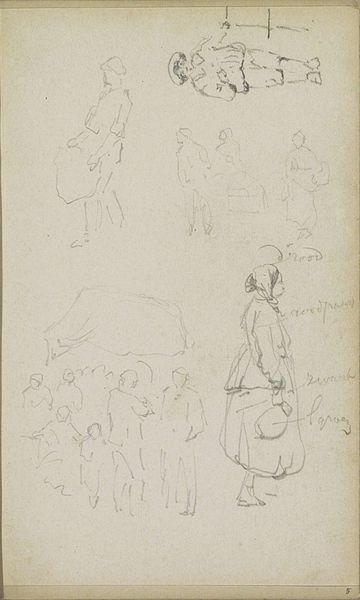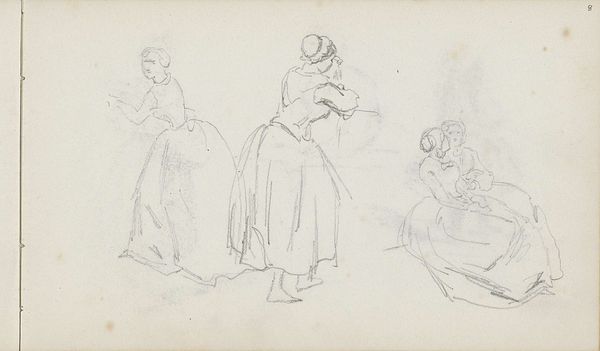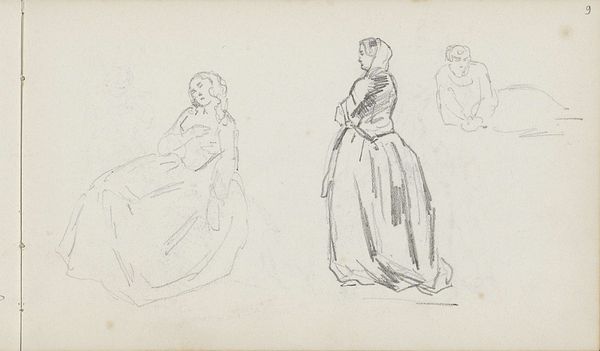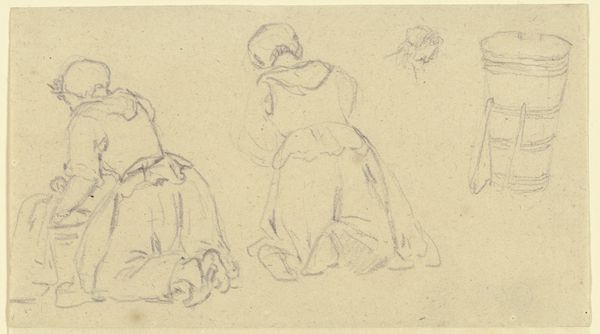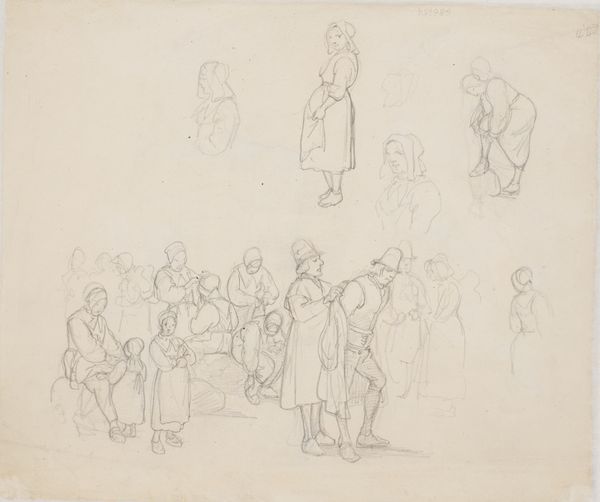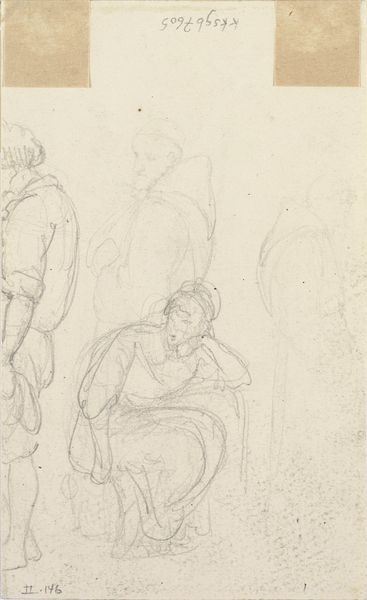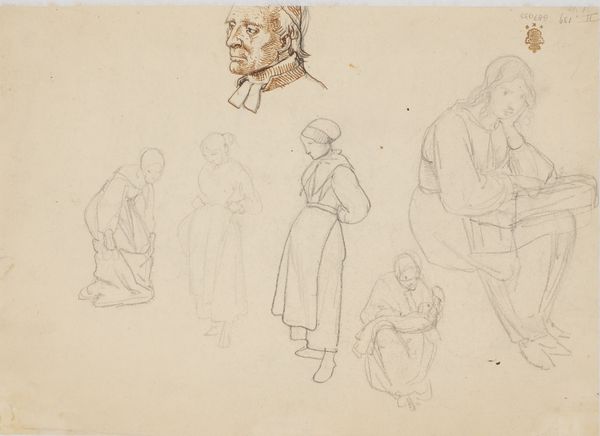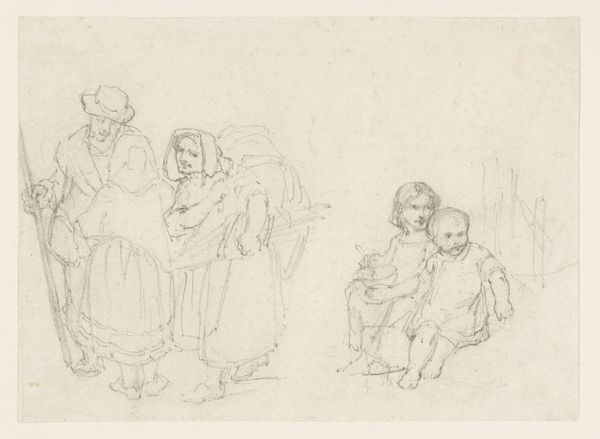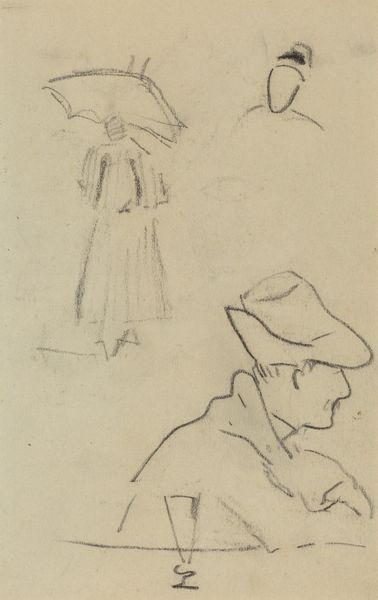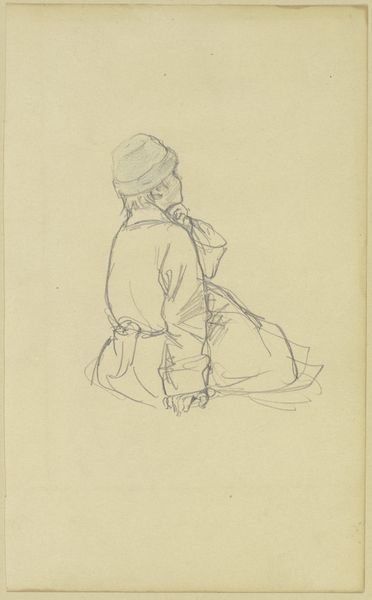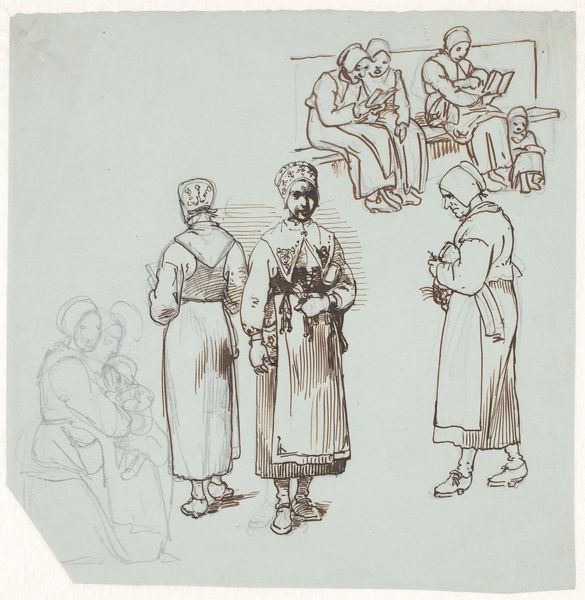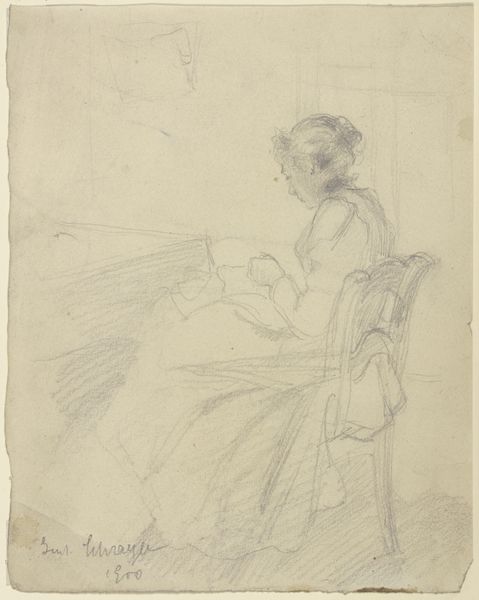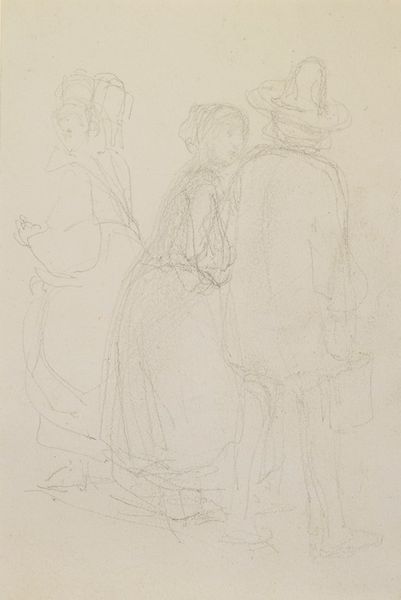
drawing, paper, pencil
#
portrait
#
drawing
#
imaginative character sketch
#
light pencil work
#
quirky sketch
#
dutch-golden-age
#
figuration
#
paper
#
personal sketchbook
#
idea generation sketch
#
sketchwork
#
pencil
#
sketchbook drawing
#
genre-painting
#
storyboard and sketchbook work
#
sketchbook art
#
realism
#
initial sketch
Dimensions: height 270 mm, width 212 mm
Copyright: Rijks Museum: Open Domain
Editor: Here we have "Figuurstudies van vrouwen en kinderen," or "Figure Studies of Women and Children," created between 1847 and 1904 by Philip Sadée. It’s a pencil drawing on paper, currently held at the Rijksmuseum. It looks like a quick sketch, a study of figures, capturing everyday life. What stands out to you about this piece? Curator: The work strikes me foremost as an exercise in form. Consider the interplay of lines – thin, deliberate strokes define the figures, yet they remain open, unfinished. It emphasizes process over product. Note the repetition of the draped fabric, how the artist uses similar lines to convey weight and volume across multiple figures. It's less about individual likeness and more about a study in conveying form. How do you perceive the spatial arrangement of these figures? Editor: It seems almost haphazard. The figures are clustered, overlapping, but not interacting. It feels less like a cohesive scene and more like separate observations on a single page. Is that intentional? Curator: Precisely. The 'haphazardness' underscores the formalist reading. This is not a narrative scene but an exploration of shape and composition. Sadée is isolating and repeating visual motifs: the curve of a back, the fall of a garment. Do you see how he almost abstracts these forms through repetition? He isn’t presenting a ‘story,’ but an idea of ‘mother and child.’ Editor: So, by focusing on the line and the form, the narrative or the emotional connection becomes secondary to the study of those elements? Curator: Indeed. The essence lies within the structure of the piece, its materiality, and how Sadée manipulates these elements. The beauty resides in the line, the shadow, and the artist’s pure expression in translating observations on paper. Editor: That’s a great way to look at it. I was initially drawn to what felt like a candid glimpse of life, but understanding the formal aspects gives it a completely different dimension. Curator: The surface reveals a much richer meaning if we can examine the structure.
Comments
No comments
Be the first to comment and join the conversation on the ultimate creative platform.
